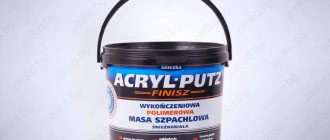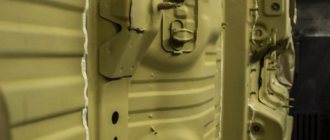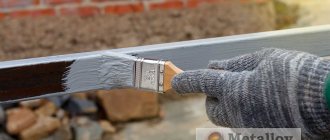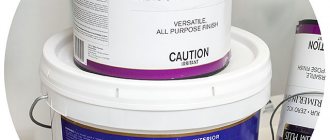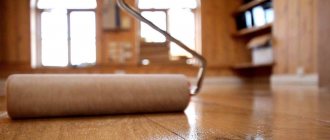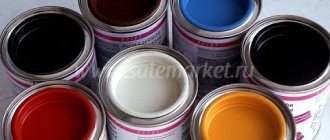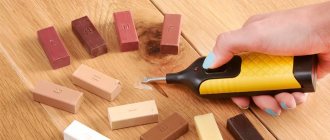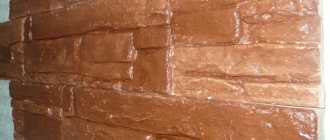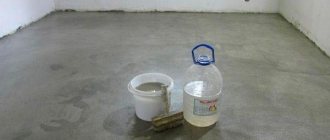The problem of body rusting is familiar to many motorists, especially owners of domestic cars.
We will not delve into the causes and consequences of this phenomenon (for many they are obvious), but in order to minimize its manifestation, as a rule, anti-corrosion treatment of the car body is carried out.
But to restore metal already damaged by corrosion, it will be necessary not only to mechanically treat it, but also to use rust converters.
Below we will consider what types of such products are available on the market and what their features are. Here are the TOP best rust converters based on real reviews and real properties.
First of all, we proceeded from the price-quality ratio, as well as popularity on the market. We avoided effective, but very expensive and unpopular means.
We will pay special attention to the rules for using these tools and precautions.
Varieties available on the market
You can find many types of converters on sale: in the form of a spray, gel or liquid.
But the main thing that you need to pay attention to when choosing is the chemical element that has a direct effect on rust.
But we must remember that such products are effective only when the rust thickness is no more than 100 microns (for some products up to 300 microns); for larger values, preliminary mechanical cleaning of the metal with a metal brush or other tool is necessary.
Acidic
A special feature of acid converters is their ability to cope with corrosion on iron of any thickness. You can work at any temperature, including frost.
Such compositions are most often used to clean car bodies, metal structures and iron elements of household appliances.
The main component of such converters is orthophosphoric or hydroxycarboxylic acid. Its functions include the destruction of the upper corrosive layer and the creation of a film.
To obtain the best effect, it is necessary to apply the inhibitor to dry metal.
When rusty metal and acid converters interact, ferum oxide (Fe2O3) is converted into an inert salt, which is easily removed from the car body.
The downside is that after treatment it is necessary to wash off the chemical composition from the surface to protect the metal from unnecessary exposure.
For application, you can use a spray, roller or brush. In this case, only the damaged area is subject to treatment without touching the whole metal.
This is a mandatory requirement for galvanized surfaces, because acid destroys zinc.
It is necessary to work in a respirator, goggles and gloves. Good ventilation is required.
Pros:
- Lack of strict conditions of use.
- Can be used in cold weather.
- Large storage temperature range.
- Sale in containers from 1 to 12 liters.
Minuses:
- The need to protect the skin from acid action.
- Need for surface cleaning.
If an acidic rust converter gets on your skin, you must immediately wash it off with high pressure water, and if necessary, go to the doctor.
Acid-free (neutral)
Acid-free converters have been gaining popularity in recent years. They use neutral chemical components (not acidic), so such products are easy to use and have a low level of toxicity.
Manufactured based on the following components.
- Tannin.
- Zinc or manganese oxide.
Tannin
The most sought after ingredient with an organic base.
Once applied to damaged metal, it interacts with rust and converts it into inactive compounds with optimal adhesion.
Tannin-based converters can be filled with water, which makes them an attractive option for protecting pipes, fittings, hidden car body cavities and other metal products.
Zinc or manganese oxide
Such compositions act on damaged metal and create protection that prevents corrosion.
Acid-free converters can be applied using any method, be it a sprayer, brush or roller.
After application, the rusty area acquires a black tint, which allows you to see the treated areas.
Pros:
- No need to rinse with water.
- Available for use in any conditions.
- Dries within two to three hours.
- Possibility of visual control of processing quality.
- Safety for humans.
Minuses:
- higher cost.
Although safe, the use of PPE is also recommended when processing rusty metal using neutral converters.
What else is included?
In addition to the main active ingredients, manufacturers add other ingredients that provide protection against future corrosion.
Let's highlight the main ones:
- Corrosion inhibitors are chemical components designed to protect metal from water and other harmful components.
- Thickeners are components that increase the effectiveness of rust converters and simplify their use. Their function is to transform the product into foam or paste, which eliminates dripping. Such additives are often used in products in the form of a gel.
- Additional ingredients. To increase the effectiveness of products, different manufacturers add different “chemicals” to their composition to impart odor or other protective properties.
When purchasing, it is important to carefully study the composition, and only then make a decision.
PINS second generation
New types of PINS have qualities that make them a separate class of rust converters.
What distinguishes them from first-generation systems is that instead of an organic solvent, they use water completely or partially. Their full name is inhibited water-wax compositions, abbreviated as IVVS.
IVVS not only have an anti-corrosion effect, but also, due to their strength, better protect the surface from mechanical damage.
To increase the functionality of PINS, additives such as zinc and graphite powder are often included in their composition.
How to use a rust converter correctly
When treating a damaged area, pay attention to the depth of the corrosion. If it is more than 100 - 150 microns, the use of a converter is ineffective.
In this case, preliminary preparation in the form of mechanical finishing is needed.
As a rule, cleaning takes place in two stages. First, mechanical preparation is performed, and only then chemical surface treatment using converters.
Exact instructions for use are given in the instructions for the product, but the general algorithm of actions is as follows:
- Mechanical restoration. At this stage, it is necessary to remove pieces of rust using a wire brush or an angle grinder with a special wheel.
- Degreasing. To achieve the desired effect, it is recommended to use a solvent.
- Cleaning. Direct use of the rust converter, taking into account the instructions and release form.
- Surface treatment with water, if required.
- Degreasing. At this stage, the same solution is used as discussed above.
- Application of primer. The exception is when the converter prepares the surface for painting.
The sequence of actions may vary depending on the characteristics of the product used.
Main varieties
You can find 2 types of acid soil on sale:
- Based on 1 component.
- Based on 2 components.
One-component
Phosphate primer based on 1 component can be used without prior preparation. It can be purchased in cans for application without auxiliary equipment or in containers with a liquid solution. The second option is applied with a spray gun in 1 thin layer. When the coating acquires the required properties, it can be treated with acrylic with the inclusion of a hardener.
Two-component
Before applying the product to a metal surface, it should be properly prepared. The instructions mention the need to mix the main substance with the activator. The final consistency takes on both hard and soft forms. Experts advise choosing the first option, as it creates a strong and reliable film over the entire treated area. It is allowed to apply primer in 1, 2 or 3 layers, observing the proportions and basic recommendations of the manufacturer. There is a 5 minute pause between reuses.
Precautionary measures
When using rust converters, you must understand that these are chemically active substances.
They must be used in strict accordance with the manufacturer's instructions and recommendations.
The use of such means is prohibited in the following cases:
- The integrity of the packaging has been compromised.
- The stated expiration date has passed.
- No personal protective equipment.
- It is impossible to organize normal ventilation.
It is necessary to remember the toxicity of such substances, which requires respiratory protection with a respirator.
Application
Rust converters are used on corroded metal surfaces that cannot be brought into the shop and sandblasted. Usually this is large-sized equipment, specialized equipment, pipes, containers, various structures and structures. Due to the fact that chemical treatment does not leave scratches, dents or other damage on the surface, rust-converting substances are widely used in restoration work of architectural monuments.
The main industries where steel rust converters are most often used are:
- construction;
- car service;
- repair and maintenance of agricultural machinery;
- railway transport;
- ship repair docks.
Protective properties of primers
Primers are also distinguished by the method of protective effect on the metal. What types of primers are there in this regard? It is best to look for each of them using a special letter marking. The following categories are distinguished:
- with a phosphating effect;
- passivating;
- tread;
- with inert particles;
- rust modifier.
Primer with phosphating effect
The composition contains phosphoric acid, which, when combined with metal, forms sparingly soluble phosphates. The resulting layer, despite its thinness (only 8-12 microns), is durable and has good adhesion. The primer is capable of penetrating into metal to a depth of 0.05 microns. After applying the first layer, you can immediately apply the second. It is easy to understand which of the primers has phosphating properties; they are marked with the letters VL.
Passivating primers
These products make the surface impervious to moisture (that is, passive) due to the chromates of certain metals contained in their composition. Thanks to this property, no oxidation reaction will occur.
To protect the fenders and underbody of a car from corrosion, a lead-lead primer is often used. When choosing a composition, it is also best to focus on the letter marking - GF.
Protective means
This primer protects the metal surface from the negative effects of the environment. The potential of the metal dust contained in it is lower than that of the car body. Thus, in relation to the car, such a primer acts as a protector. The letter designations EP and E refer to protective primers.
Compositions with inert particles
These primers mechanically protect the surface without interacting with other film-forming substances. These compounds are most often used during minor body repairs. Their markings, for example, are FL-OZK, GF-21.
Rust modifier
Essentially, this primer is a converter of corrosion products. In cases where rust removal is impossible for some reason, the composition is applied directly to the damaged area of the surface, interacting with it. Corrosion elements are converted by the modifier into a durable protective film. The composition in cans can be applied by spraying or brushing in two layers. A prerequisite for high-quality work with such a primer is an air temperature of at least +15 C0.
Preparing the body for priming
The slightest damage to the car body can destroy the metal. The primer is an intermediate link between the metal body and the final layer of paint on the surface of the vehicle. An incorrectly selected composition leads to sagging of the paint, so it is not worth saving on the purchase of such material. Preparing the car body for priming includes:
- cleaning the work surface;
- degreasing the material for priming;
- preparation of personal protective equipment for working with acid primer.
If you apply a layer using an aerosol in a can, the coating will be more even than if you do it with a brush. The acid layer is applied only after complete degreasing, checked with a clean cloth.
In addition, you need to prepare everything necessary for applying the primer:
- aerosol can for applying primer;
- spray gun;
- brush;
- rubber gloves and respirator;
- special clothing and shoes.
Acid Primer Application Methods
This composition can be applied in the following ways:
- using a brush;
- aerosol spray method;
- dip the metal into the primer solution;
- electrodeposition;
- spraying using electricity.
The method of dipping into primer is applicable only in factory conditions. When working with acidic primers, precautions must be taken to avoid poisoning by chemical components. This primer is applied before painting the car body. Grinding may be expected in the composition, but it may also be non-grinding.
The result of the work when applying primer depends entirely on the skill of the performer. A protective layer of acid primer applied to a metal surface will reliably protect it from rust.
The acidic material contains polyvinyl-butylene, which protects the metal from corrosion. The composition can be applied to the following metal surfaces:
- aluminum;
- made of chromed steel;
- galvanized steel;
- stainless steel;
- steel.
Polyester-based materials should not be applied to an acid base. Acid is toxic, therefore, when spraying the spray, you must use protective equipment. Just an hour after applying the acid primer, you can begin the final treatment.
Types of material: one-component aerosol, two-component formulations
Acid anti-corrosion primer belongs to the category of primary primers (novol, body 960), which treat the surface of the car with a uniform thin layer in order to prevent rust from spreading.
Important! Painting a car over such a primer is strictly prohibited.
After drying these primers, secondary primers must be applied.
The main properties of reactive primers, including the body and novol brands, are wear resistance, resistance to aggressive salt environments and moisture. They are well preserved under various mechanical, chemical or atmospheric influences.
There are:
- one-component primary ones that do not require the addition of a catalyst. These include, for example, mobihel brand soil; they are also available in aerosol cans;
- two-component primary. A hardener must be added to such primers.
Phosphoric acid is added as such to acidic soil, which, when it reacts chemically with synthetic resins, anti-corrosion and organic pigments, generates heat.
However, it is not capable of melting dishes, even those made of plastic. These include brands body 960, novol protect 340 wash primer.
Useful! Acid primer is perfectly applied to such car metal surface materials as: aluminum, galvanized, chrome-plated and stainless steel coatings, welding seams, iron, and many others.
How to choose the right acidifier?
Today there are many brands of acid primer: getapro, body 960, novol, chemical reserve, mixon and others, so choosing the right one becomes difficult. First of all, you need to understand that you cannot save on primers.
If you use low-quality but cheap primer for your car, you may end up with a damaged appearance of the car’s surface: uneven painting, insufficient corrosion treatment, etc.
Before purchasing, you must carefully study the instructions for use of a particular brand of primer; there should be enough information there: drying time and temperature, mixing proportions, compatibility with various coatings, and more.
Useful! For small surfaces, you can use acid primer in a can, but for large parts it is better to buy a liter jar.
And, importantly, before purchasing a primer, pay attention to the release date, expiration date and storage conditions indicated on the primer container. After all, even the highest quality paint and varnish products, if expired or improperly stored, can have the opposite effect from the expected one and cause more harm than good.
It is better to choose primers from well-known and trusted manufacturers that have been tested by consumers more than once, such as body 960, novol.
These brands of acid primers can be purchased in any auto painting store. The average price of a one-component primer in a can is 300-400 rubles. A two-component set costs from 800 to 1200 rubles.
Operating principle of converters and their composition
There are various products on sale that belong to the group of rust converters. All of them, despite the different components in their composition, work on a similar principle - they transform iron oxide into chemically inert substances. Most often, the composition of the converters is represented by orthophosphoric acid - the antipode of rust, or other acids. Such chemical elements actively react with the corrosion layer and convert it into salts, which can be easily removed from the surface of the metal product. Acid products have one disadvantage: if they are not washed off the surface after work, they themselves can become a source of corrosion.
To get rid of rust on metal and prevent its development in the future, more advanced compositions have been developed. These may include:
- Corrosion inhibitors. They protect metal bases from water, temperature changes, and aggressive chemicals for a long time. Most often, zinc acts as a corrosion inhibitor. This chemical element binds with oxygen atoms, resulting in the formation of a durable film that reliably protects carbon steel and stainless steel from destruction. In addition to zinc, manganese or tannin can act as a corrosion inhibitor.
- Thickeners. These synthetic substances are included in rust converters to facilitate application and retention on the surface. Without thickeners, the product will drain from a vertical or inclined base, and the effect will not be fully manifested.
The converters may contain additional substances - film formers, flavoring agents, various additives that enhance the effect of the main elements.
Using the Converter
The correct procedure for using a particular solution can be clarified from the instructions, but most converters are applied using a similar technology. First you need to prepare the base:
- remove loose rust, which is easily removed mechanically and peels off without much effort;
- clean the metal with a brush or sandpaper;
- wash the surface and degrease.
Then you can proceed to the main stage. The composition should be applied with a brush, spraying, irrigation (depending on its shape and thickness), and wait the allotted time. If there is a strong rusty coating, it is recommended to repeat the application again after 10–15 minutes. After the total exposure time has expired, you need to brush off the loose mass or rinse it off - as indicated in the instructions. After washing, the surface must be thoroughly dried, and then primed and painted, if required.
To obtain decent quality of the finished coating, it is important to follow these tips when working:
- first test any rust converter on an inconspicuous area of the part;
- apply a layer of the thickness specified by the manufacturer (if necessary, use special instruments to measure the indicator);
- wait the required time for the rust to soften and only then begin to remove plaque;
- Carefully wash off the resulting primer layer so as not to scratch the finished film.

